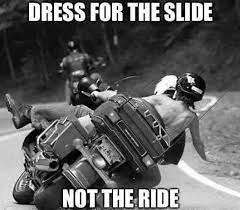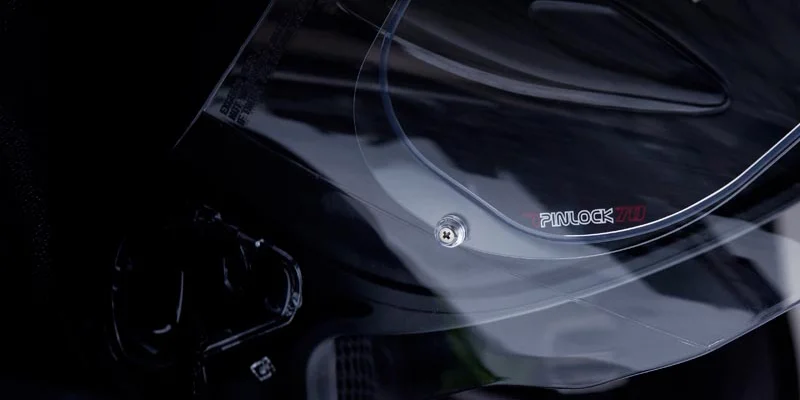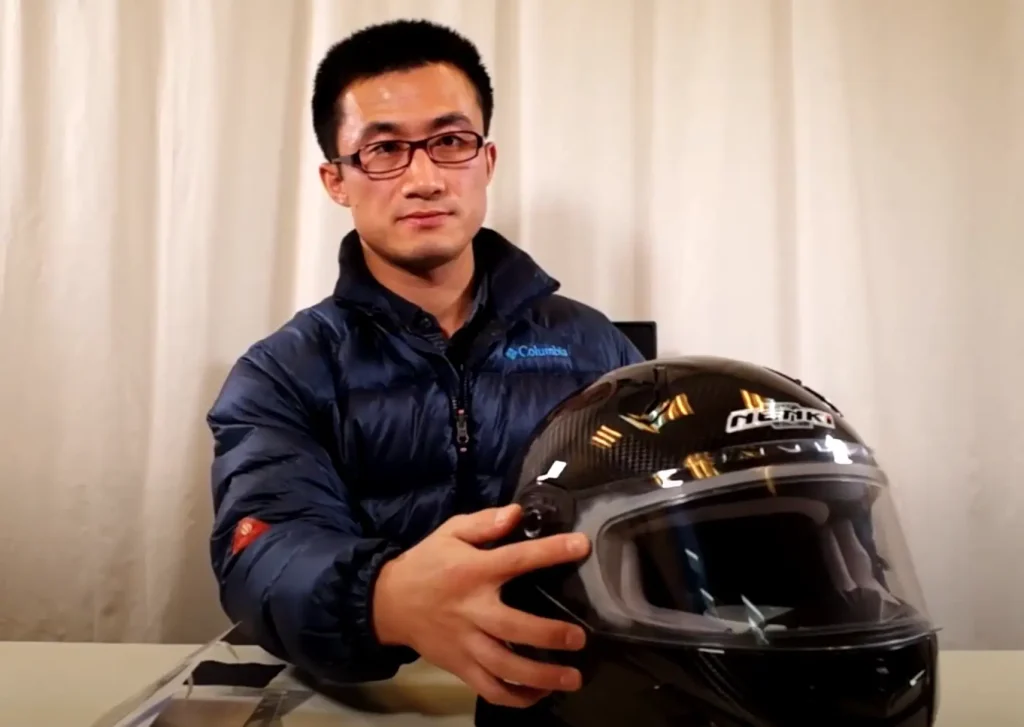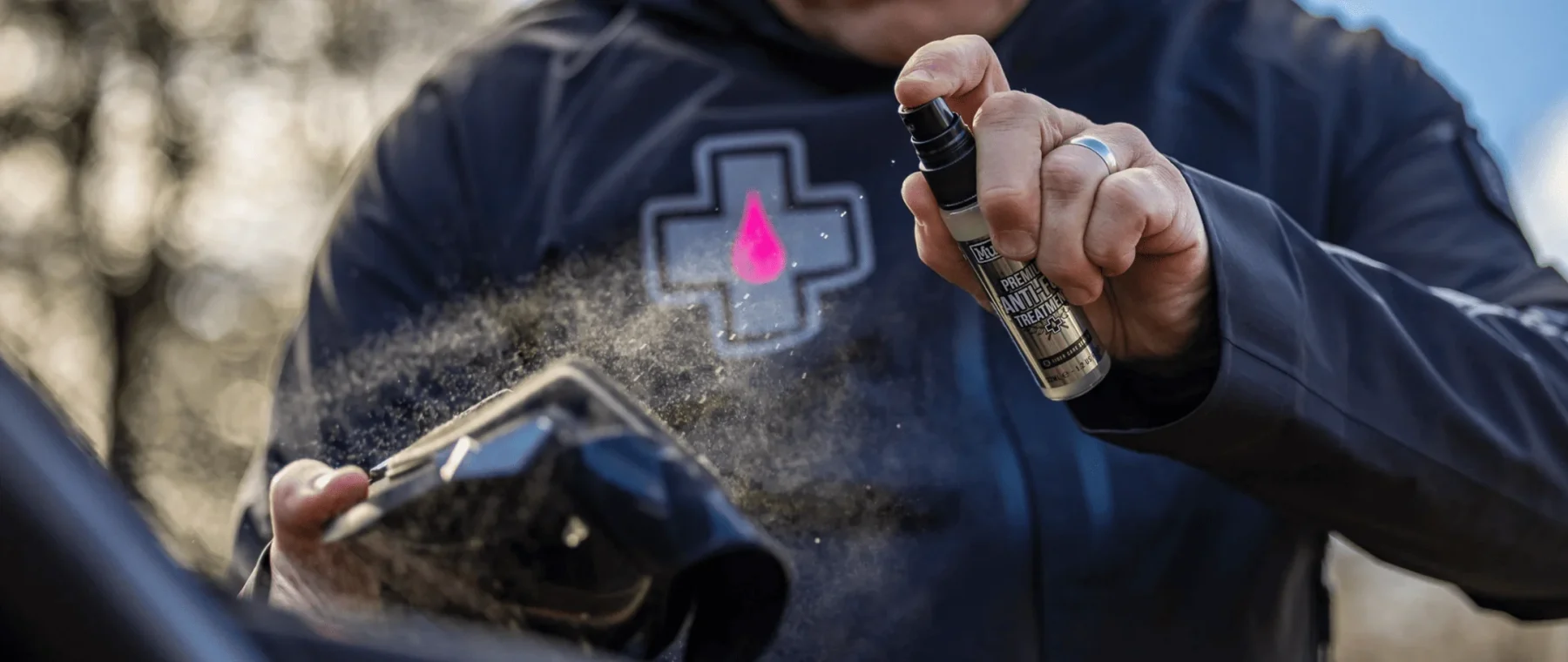
Motorcycle Helmet Visor Fog Prevention – DIY or Buy
left for contents
A fogging visor is not an inconvenience. It’s a safety issue.
Most crashes aren’t just one big mistake. They’re multiple small ones all adding up: glare, driving too fast, and a driver changing lanes without a signal. Loud car, wet road, and a distracted rider.
Riding with a visor that’s constantly fogging is riding with one small mistake. That makes your ride a LOT less safe, ALL THE TIME. Don’t be like me, ignore a clean visor, and end up with a broken collar bone.

Unfortunately, motorcycle helmet fogging can become a recurring problem. Even top-of-the-range visors are susceptible to fogging up. Poor ventilation on the inside of your visor is part of riding and condensation is likely to form.
I don’t want you to be another motorcyclist that ends up on the pavement. So here are my tips to clear up your visor once and for all.
Fog Prevention Options
Open the vents or visor for improved airflow
Most anti-fog motorcycle helmets come with vents for airflow. These help reduce the temperature inside the helmet and allow moisture to escape. Ensure as many vents as possible are open before going out on your bike – that will help reduce condensation.

Another tactic is to open the visor while riding, letting in the fresh air.
However, this can solve the problem by creating another one, with the visor offering less protection from wind and rain.
A quick temporary fix can be to open your visor whenever you make a stop. At traffic lights, for example. This refresh of air inside the helmet can clear the visor.
But this doesn’t stop the underlying issue. Condensation will continue to build up once closed again.
So how can you stop visor fogging once and for all?
Use a Pinlock visor
Pinlock visors are a simple solution to what seems like the complex problem of helmet visor fogging.

All a Pinlock visor does is add a layer of air between the inside of your helmet and the visor.
How does this prevent fogging? Fogging happens because of a difference in temperature inside and outside the helmet. Your warm and wet breath hits the visor, which is cooled by the air outside. So condensation forms.
The Pinlock visor traps a pocket of air between the Pinlock visor and the outside visor. That air allows the Pinlock visor to be at the temperature of your breath while the outside visor is cool. No condensation!
It’s basically a double-glazed window. Trapped air is an excellent insulator, preventing your warm breath from hitting the cold visor.
Pinlocks will not fit in all helmets. You can check to see if your helmet will support pin lock visors by looking for two little studs on the inside of your visor, near the right and left edges. That’s where the visor will clip in.
Universal Anti-Fog Visor Inserts
If your helmet doesn’t have posts for a Pinlock visor, check out the WeePro insert.
The WeePro insert prevents motorcycle helmet fogging using the same principle as Pinlock visors. However, they fit in any helmet – no Pinlock posts needed.

Anti-Fog Face Mask
Visors not cutting it for you? Try not breathing!

Or the next best thing – absorbing your breath before it hits the visor with an anti-fog face mask.
Anti-fog face masks stop fog by absorbing moisture. Usually made of neoprene, they are worn over the nose and mouth and fasten to the inside of the helmet.
They guide your breath away from the visor and absorb moisture to reduce condensation. Anti-fog face masks are an affordable option, so try one if the visors aren’t working for you.
Anti-Fog Sprays
A temporary solution for motorcycle helmet fogging is available through the use of anti-fog sprays. They are applied to the entire surface of the visor evenly and form an anti-fog layer that stops condensation.
A great option is this one from Muc-Off. You can also spray it on the outside of your visor to help rain and moisture bead up and fall away.
The layer only lasts 5 days, so you’ll need to reapply often.

Give These a Try
There are plenty of other fixes out there that some riders will swear by. These include:
- Removing neck buffs or nose guards to improve ventilation (sometimes these push warm air UP instead of OUT)
- Furniture polish on the visor, applied and buffed with a cloth to give a clear view
- Simple dishwashing soap used to wash the inside of your visor
- Your own spit/saliva – in a pinch, this will add a layer of water that temporarily stops condensation from forming. Scuba divers use this effectively to keep masks from fogging at depth.

Why does my helmet visor fog up?
We’ve discussed some of the solutions, but what causes motorcycle helmet fogging? Understanding the underlying science behind what is happening can help you learn how to stop helmet visor fogging in the future.
Enclosing your head with a helmet and visor creates the perfect conditions for condensation to form.

As you ride, your visor chills due to external conditions. This could be because of low temperatures, rain, and wind. When moisture from your exhaled warm breath hits the cold visor, it rapidly cools and condenses, creating the fogging we are all familiar with. It is the same effect as windshields when you get in your car on a cold day. However, your car has a blower to clear the condensation away. We motorcycle riders are not so lucky.
Another factor to consider is humidity. Higher humidity means there is more water vapor to condense onto the visor, worsening motorcycle helmet fogging(1).
As fogging is affected by climate conditions, your geographical location significantly affects how bad of a problem it is(1). Places with:
- Colder climates
- Higher rainfalls
- Stronger wind chills
- Higher humidity levels
Are more prone to motorcycle helmet condensation.

The solutions discussed above work in a few different ways:
- Increasing ventilation or directing breath away from the visor to reduce the temperature and humidity inside the helmet, reducing condensation.
- Creating a layer of insulating air between the visor and your breath.
- Creating a layer on the visor which doesn’t allow condensation (microscopic beads of water) to form on the inside of the visor.
The last one is how anti-fog sprays work. They form a temporary bond on the visor surface. They contain hydrophilic ingredients (a fancy way of saying water ‘loving’) or surfactants that lower the surface tension of the water molecules(1).
Lowering the surface tension of water condensing on the visor produces a thin film instead of droplets. A film of water allows light to pass straight through it, and you get to see what’s happening on the road. Droplets of water disperse light, producing blurry and unclear vision that we know as condensation.
What works as anti-fog?
As mentioned before, some riders will swear by using furniture polish, washing up liquid, or even spit to prevent fogging on your visor. However, there are some common misconceptions out there, and it is important to research or do some home testing to make sure you are not going to worsen the problem.
There are some “fixes” out there on the internet that actively do more harm than good. Please don’t attempt to use toothpaste or shaving cream. These can be abrasive to the visor while also potentially stripping other coatings applied to the visor for scratch resistance or UV filtering.
Another solution some riders use is Rain-X glass water repellent. Rain-X utilizes water-beading technology to help keep car windshields clean from grime, dust, bugs, and weather. However, this product is intended for automotive glass applications only and is not recommended for use with plastic motorcycle visors.
Best Anti-Fog Spray
We believe the best anti-fog spray out there is Muc-Off Premium Anti Fog Treatment. Muc-Off is a company that designs products specifically for motorcycle and bicycle use, rather than adapting products for other niches.

Muc-Off’s Anti Fog Treatment spray uses its premium anti-mist formula to create a transparent, micro-thin coating on the inside of your visor that is long-lasting. So you don’t have to worry about constantly spraying your visor. One treatment prevents fogging for up to five days.
It has excellent moisture absorption properties that help motorcycle helmet rain and sweat bead off and out of your vision. It is available in a small handy 32ml spray bottle, taking up barely any space in your pack.
Don’t just take our word for it; 77% rated it “excellent” on Trustpilot with over 6000 reviews.
How to make your own anti-fog spray?
If you want to save some money and take the DIY approach, you can make your own anti-fog spray.
A simple anti-fog solution with alcohol is just 1/4 cup of water and 3/4 cup of rubbing alcohol mixed with a drop of dish soap. Place in a spray bottle, shake well, and you’re good to go.
If you don’t want to use alcohol, another approach uses vinegar. Fill a cup 1/3 full of water, then fill to the brim with vinegar. Transfer to a spray bottle and apply to your visor. Once applied, wipe down using a microfiber cloth. This vinegar solution is also great for cleaning off the grime from your visor.
When making DIY anti-fog solutions, it is good to use distilled water instead of tap water. Distilled water has no other minerals that might screw up your spray.
Never Let Fogging Ruin Your Ride
No matter where you live or how often you ride, you need a plan to deal with motorcycle helmet fogging. Even if you live in a warm, dry climate and ride infrequently, it only takes your vision to be impaired once for there to be dire consequences.
With everything to consider when it comes to motorcycle helmet fogging, make sure you find the solution that matches your needs. The benefits of not having to worry about reduced vision on a ride will outweigh your efforts. Forget about unplanned breaks to clean up your visor and make a plan for how to stop helmet visor fogging.
